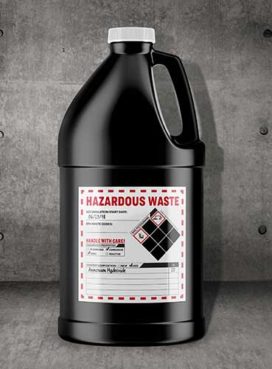Label requirements for hazardous waste
What are the new Environmental Protection Agency labeling requirements for hazardous waste containers?

Responding is Colwin Chan, group product manager, Avery Safety and Facilities Solutions, a division of the Avery Products Corp., Brea, CA.
To enhance safety and environmental protection, the Environmental Protection Agency’s Hazardous Waste Generator Improvements final rule, which went into effect last year, requires including the words “hazardous waste,” a description of the container’s hazards and the date the accumulation started. Labels, however, are not required to include the identity of the container’s contents, as proposed.
Previous Resource Conservation and Recovery Act program labeling regulations did not require waste generators to identify and indicate the hazards of hazardous wastes accumulated in containers, tanks, drip pads and containment buildings. This resulted in a failure to communicate risks associated with wastes being accumulated or stored in different locations, which could put workers, waste handlers, emergency responders and visitors at risk.
To resolve this issue, the final rule stipulates that container and tank labels must indicate the hazards of such containers’ contents in numerous affected areas. These include areas for waste generator satellite accumulation or central accumulation; transfer facilities consolidating hazardous wastes from different generators; and generator container/tank storage areas at treatment, storage and disposal facilities.
Fortunately, the final rule allows ample flexibility in how to comply with this new provision. For drip pad and containment buildings, the generator can keep this information in logs or records near the accumulation unit.
Waste generators can indicate the hazards of the container’s contents using several established methods, such as Department of Transportation hazard communication, an OSHA hazard statement or pictogram, a National Fire Protection Association chemical hazard label, or an RCRA characteristic.
Examples of how to indicate the hazards include:
- The words of the applicable hazardous waste characteristic(s) (i.e., ignitable, corrosive, reactive, toxic).
- Hazard communication consistent with DOT requirements at 49 CFR Part 172 Subpart E (labeling) or Subpart F (placarding).
- A hazard statement or pictogram consistent with the OSHA Hazard Communication Standard (1910.1200).
- A chemical hazard label consistent with NFPA Code 704.
RCRA waste codes must be placed on the containers before shipping hazardous waste offsite to an RCRApermitted treatment, storage and disposal facility, but do not need to be applied before that time. An electronic system, such as a bar code system, is acceptable as long as the RCRA waste code(s) are tied to the specific container.
Preprinted labels with handwritten accumulation start date and marked hazardous properties (flammable, corrosive, toxic, reactive; or GHS pictograms) are acceptable under the final rule. In addition, label software templates are available that help end users enter the required information and print labels using a desktop printer.
Editor's note: This article represents the independent views of the author and should not be construed as a National Safety Council endorsement.
Post a comment to this article
Safety+Health welcomes comments that promote respectful dialogue. Please stay on topic. Comments that contain personal attacks, profanity or abusive language – or those aggressively promoting products or services – will be removed. We reserve the right to determine which comments violate our comment policy. (Anonymous comments are welcome; merely skip the “name” field in the comment box. An email address is required but will not be included with your comment.)

